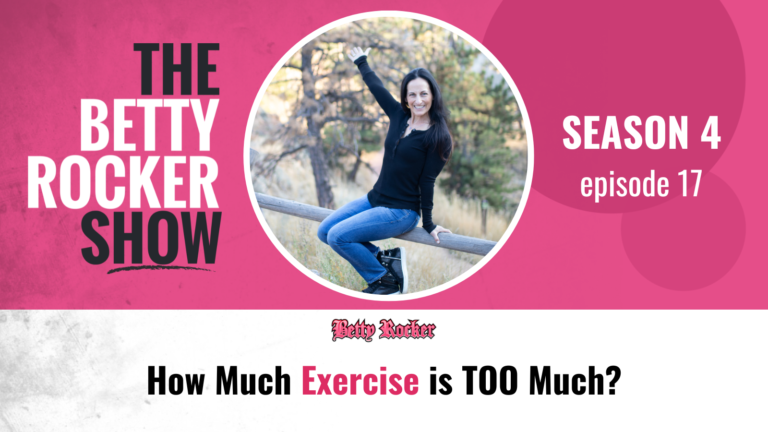
If you’ve ever wondered whether Paleo or Keto is the right path to a healthier you, you’re not alone. These two diets have captured the attention of health enthusiasts, gym-goers, and anyone seeking better nutrition. While they share a focus on whole foods and cutting out processed ingredients, their approaches to carbs, fats, and proteins set them apart. Let’s break down what makes each diet unique, so you can confidently choose the one that aligns with your goals.
What Is Paleo?
The Paleo diet, often called the “caveman diet,” is based on the idea of eating foods that our ancient ancestors would have hunted or gathered during the Paleolithic era. This means focusing on whole, unprocessed foods like meats, fish, eggs, fresh fruits, vegetables, nuts, and seeds, while avoiding grains, legumes, dairy, refined sugar, and most processed foods. The goal is to nourish the body with nutrient-dense foods that support natural energy, stable blood sugar, and overall wellness, all while steering clear of modern ingredients that may contribute to inflammation or digestive issues.
What Is Keto?
The Keto, or ketogenic, diet is a high-fat, very low-carbohydrate eating plan designed to shift your body into a metabolic state called ketosis, where it burns fat for fuel instead of carbs. By drastically reducing carbohydrate intake—usually to around 20–50 grams per day—and increasing healthy fats and moderate protein, the Keto diet encourages the body to produce ketones, which provide a steady source of energy. This approach is popular for its potential to accelerate fat loss, stabilize blood sugar, and enhance mental clarity, making it a favorite among those seeking efficient weight management and sustained energy.
Paleo vs Keto: What’s The Difference?
Core Philosophy
- Paleo: Focuses on eating like our Paleolithic ancestors by choosing whole, unprocessed foods and avoiding anything that wouldn’t have been available to early humans.
- Keto: Centers on achieving and maintaining ketosis by drastically reducing carbs and increasing fat intake, regardless of whether foods are “ancient” or modern.
Allowed Foods
- Paleo: Emphasizes meats, fish, eggs, vegetables, fruits, nuts, and seeds. Excludes grains, legumes, dairy, refined sugar, and processed foods.
- Keto: Prioritizes high-fat foods like oils, butter, fatty meats, cheese, and low-carb vegetables. Severely limits carbs, including most fruits, grains, and starchy vegetables.
Carbohydrate Approach
- Paleo: Allows moderate carbs from fruits and vegetables, as long as they’re whole and unprocessed.
- Keto: Strictly limits carbs (usually 20–50 grams per day) to maintain ketosis, often excluding even some fruits and higher-carb vegetables.
Dairy and Legumes
- Paleo: Excludes all dairy and legumes, considering them “non-ancestral” foods.
- Keto: Allows dairy (especially high-fat options) and some legumes, as long as they fit within daily carb limits.
Primary Goal
- Paleo: Aims for overall health, improved digestion, and reduced inflammation by mimicking ancestral eating patterns.
- Keto: Focuses on rapid fat burning, stable blood sugar, and mental clarity through metabolic adaptation.
Flexibility
- Paleo: More flexible with carb intake but stricter about food sources.
- Keto: More flexible with food sources (including some processed foods) but extremely strict about carb intake.
Which Diet Is Easier To Transition To?
Transitioning to Paleo is often considered easier for most people because it allows a wider variety of whole foods, including fruits and starchy vegetables, which can help satisfy cravings and provide steady energy. Paleo’s focus on eliminating processed foods and common allergens like grains and dairy can feel restrictive at first, but it doesn’t require strict macronutrient tracking or counting carbs. In contrast, Keto demands a significant reduction in carbohydrate intake and careful monitoring of fat and protein, which can be challenging for beginners and may lead to symptoms like “keto flu” during the initial adjustment. Ultimately, the ease of transition depends on your current eating habits and how comfortable you are with dietary changes.
Which Diet Is Easier To Maintain Long-Term?
For many people, the Paleo diet is easier to maintain long-term because it offers more flexibility with food choices and doesn’t require constant tracking of macronutrients. By allowing a broader range of whole foods, including fruits and starchy vegetables, Paleo can feel less restrictive and more sustainable as a lifestyle rather than a temporary diet. In contrast, Keto’s strict carbohydrate limits and emphasis on high fat intake can make social situations, dining out, and meal planning more challenging over time. While both diets require commitment, Paleo’s focus on natural, unprocessed foods tends to be more adaptable for everyday living and long-term success.
Paleo vs Keto Foods
|
Food Group |
Paleo Diet |
Keto Diet |
|
Meat & Fish |
Allowed (focus on grass-fed, wild) |
Allowed (focus on fatty cuts) |
|
Eggs |
Allowed |
Allowed |
|
Vegetables |
Allowed (all except legumes) |
Allowed (mostly low-carb, non-starchy) |
|
Fruits |
Allowed (in moderation) |
Limited (mostly berries, in moderation) |
|
Nuts & Seeds |
Allowed |
Allowed (in moderation) |
|
Dairy |
Not allowed |
Allowed (prefer high-fat, low-carb) |
|
Grains |
Not allowed |
Not allowed |
|
Legumes |
Not allowed |
Limited (some, if low in carbs) |
|
Oils & Fats |
Allowed (natural oils, avocado, etc.) |
Allowed (emphasis on healthy fats) |
|
Bone Broth |
Allowed |
Allowed |
|
Processed Foods |
Not allowed |
Not allowed |
|
Sweeteners |
Natural only (honey, maple syrup) |
Allowed (low-carb, like stevia, erythritol) |
This table highlights the main similarities and differences in food choices between Paleo and Keto diets.
What Are The Main Challenges Between The Two Diets?
Both Paleo and Keto diets come with unique challenges that can impact long-term success. Paleo can feel restrictive due to the elimination of grains, dairy, and legumes, making it difficult to navigate social events or find convenient meal options. Keto, on the other hand, requires strict carbohydrate tracking and a high intake of fats, which can be hard to sustain and may lead to initial side effects like fatigue or “keto flu.” Additionally, both diets demand careful meal planning and label reading to avoid hidden ingredients, and each can present hurdles when dining out or traveling. Ultimately, the main challenges stem from the need for consistent commitment, adaptability, and a willingness to adjust your lifestyle to fit the chosen diet.
How Do You Decide Between Paleo And Keto?
Deciding between Paleo and Keto comes down to your personal health goals, lifestyle preferences, and how your body responds to different foods. If you’re looking for a flexible approach that emphasizes whole, unprocessed foods without strict macronutrient tracking, Paleo may be the better fit—especially if you enjoy fruits and starchy vegetables. On the other hand, if your primary goal is rapid fat loss, blood sugar control, or mental clarity, and you’re comfortable with a high-fat, low-carb regimen, Keto could be more effective. Consider your daily routine, social life, and willingness to adapt to dietary restrictions, and don’t hesitate to consult with a healthcare professional to ensure your choice supports your long-term well-being.
Common Mistakes To Avoid in Paleo and Keto
- Not Planning Meals Ahead: Failing to plan can lead to grabbing convenient, non-compliant foods or missing essential nutrients, making it harder to stick to either diet.
- Overeating “Allowed” Foods: Just because certain foods are permitted doesn’t mean they should be eaten in unlimited quantities; portion control is still important for both diets.
- Ignoring Nutrient Balance: Focusing too much on protein or fat while neglecting vegetables and micronutrients can result in deficiencies and reduced overall health.
- Relying on Processed “Diet” Products: Many packaged foods labeled as “Paleo” or “Keto” are still highly processed and can undermine the benefits of a whole-foods approach.
- Not Listening to Your Body: Ignoring signs of fatigue, digestive issues, or other health concerns can lead to burnout or nutrient imbalances—adjust your diet as needed for your unique needs.
Conclusion
Choosing between Paleo and Keto ultimately depends on your individual goals, preferences, and how your body feels on each diet. Both approaches emphasize whole, nutrient-dense foods and can support weight loss, improved energy, and better overall health when followed mindfully. Paleo offers more flexibility with natural carbs and a focus on ancestral eating, while Keto provides a structured path to fat burning and blood sugar control through strict carb restriction. By understanding the core differences and considering your lifestyle, you can confidently select the diet that aligns best with your needs—and set yourself up for lasting success on your health journey.
Final Thoughts
Looking for a simple way to complement your Paleo or Keto diet with added nutrition and flavor? Dive into Dr. Kellyann’s best sellers and explore options like chicken bone broth, beef bone broth, and french onion bone broth crafted to support gut health and overall vitality. Want to try something new? The Greek Lemon Chicken Bone Broth offers a zesty, nourishing twist. Visit Dr. Kellyann’s to discover more delicious ways to fuel your wellness journey.
Sources
- https://www.bannerhealth.com/healthcareblog/teach-me/paleo-diet
- https://my.clevelandclinic.org/health/articles/24003-ketosis
- https://www.wholefoodsmarket.com/special-diets/paleo/what-is-paleo






